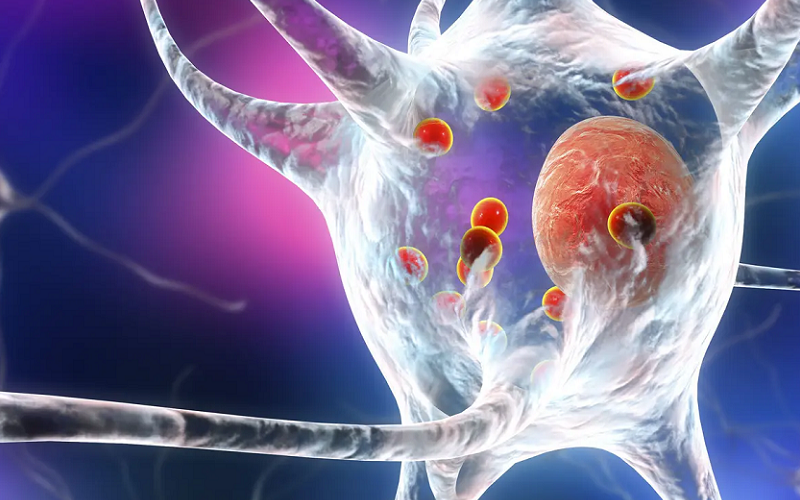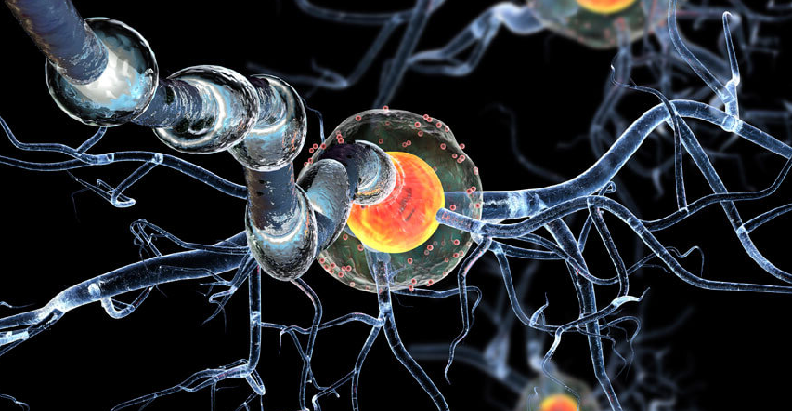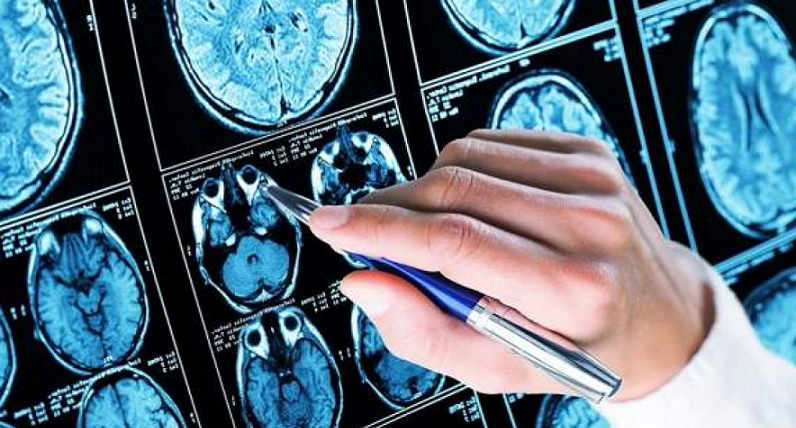
Lewy Body Dementia (LBD) stands as one of the most complex and challenging forms of dementia, affecting millions worldwide. Yet, it often remains shrouded in mystery and misdiagnosis. Here we go deep into the intricacies of LBD, exploring its symptoms, underlying causes, and effective management strategies.
Contents
- Understanding Lewy Body Dementia (LBD)
- Symptoms of Lewy Body Dementia
- Diagnosing Lewy Body Dementia
- Management and Treatment of Lewy Body Dementia
- References
Understanding Lewy Body Dementia (LBD)
Lewy Body Dementia (LBD) is a complex and multifaceted neurological disorder that presents a unique set of challenges both in its understanding and management. To fully grasp the impact of this condition, it’s essential to delve into the scientific basis of LBD, along with its different types.
The Science Behind LBD
LBD is not just a singular condition but a spectrum of disorders characterized by the presence of Lewy bodies in the brain.
What Are Lewy Bodies?
Lewy bodies are abnormal protein deposits primarily composed of a protein called alpha-synuclein. These deposits are found in brain cells and are believed to disrupt normal brain function. The presence of Lewy bodies is a hallmark of LBD, and their distribution within the brain is closely tied to the variety and severity of symptoms experienced.
How Lewy Bodies Affect the Brain
The accumulation of Lewy bodies in certain parts of the brain, such as the cerebral cortex and the brainstem, leads to a deterioration of critical neural pathways. This disruption impacts various aspects of brain function, including movement control, cognitive abilities, and behavior regulation. Understanding how these protein deposits affect brain function is crucial to recognizing the symptoms and managing the disease effectively.
Types of Lewy Body Dementia
Lewy Body Dementia encompasses two related but distinct conditions. Both share the presence of Lewy bodies but differ in their initial symptoms and progression.
Dementia with Lewy Bodies (DLB)
DLB typically presents with cognitive and memory difficulties as the initial symptoms, often preceding or occurring alongside movement disorders. It is characterized by fluctuations in cognitive ability, prominent visual hallucinations, and Parkinsonian motor symptoms.
Parkinson’s Disease Dementia (PDD)
In contrast, Parkinson’s Disease Dementia usually begins with movement disorders, similar to Parkinson’s disease, and is followed by cognitive and behavioral symptoms over time. The distinction between PDD and Parkinson’s disease lies in the timing of cognitive decline relative to motor symptoms [1].

Symptoms of Lewy Body Dementia
Lewy Body Dementia (LBD) manifests through a wide range of symptoms that impact cognitive functions, physical health, and psychological well-being. These symptoms can vary significantly among individuals and may fluctuate over time. Understanding these symptoms is crucial for early recognition, accurate diagnosis, and effective management of LBD.
Lewy Body Dementia Cognitive Symptoms
Cognitive impairments are central to LBD, affecting various aspects of mental functioning.
Memory Loss
While memory loss in LBD might not be as prominent as in Alzheimer’s disease, it is still a significant concern. Individuals may experience difficulty in recalling recent events or information, though long-term memory often remains intact in the early stages.
Executive Function Impairments
Impairments in executive functions are common in LBD. This includes challenges with problem-solving, multitasking, planning, and decision-making. Such difficulties often manifest in everyday activities, impacting the person’s ability to manage personal affairs and maintain independence [2].
Lewy Body Dementia Physical Symptoms
LBD also affects the body, leading to several physical symptoms, especially those similar to Parkinson’s disease.
Movement Disorders
Individuals with LBD often experience motor symptoms such as rigidity, tremors, and slow movements. These Parkinsonian features can significantly impact mobility and dexterity, leading to challenges in performing daily tasks.
Sleep Disturbances
Sleep issues are prevalent in LBD. One of the most distinctive is REM sleep behavior disorder, where individuals physically act out their dreams, often resulting in sleep disturbances both for them and their bed partners.
Lewy Body Dementia Psychological Symptoms
Psychological symptoms in LBD can be particularly distressing for both the individuals and their caregivers.
Hallucinations and Delusions
Visual hallucinations are a hallmark of LBD, often occurring early in the disease. These can range from benign to distressing. Delusions, or false beliefs, are also common and can lead to challenging behaviors.
Mood Changes and Depression
Mood fluctuations, including depression and apathy, are common in LBD. These changes can affect quality of life and are essential to address in the management of the disease [3].

Diagnosing Lewy Body Dementia
Diagnosing Lewy Body Dementia (LBD) is often a complex process, fraught with challenges due to its overlapping symptoms with other types of dementia and neurological disorders. Accurate diagnosis is crucial for appropriate management and care planning.
Challenges in Diagnosis of Lewy Body Dementia
The journey to a definitive LBD diagnosis is often convoluted. The variability and fluctuating nature of symptoms can easily lead to misdiagnosis. LBD shares common features with Alzheimer’s disease and Parkinson’s disease, making it difficult for even experienced clinicians to differentiate. Early and accurate diagnosis is essential but can be challenging due to these overlaps.
Diagnostic Criteria and Tests for Lewy Body Dementia
While there is no single test to diagnose LBD, a combination of clinical evaluations and diagnostic criteria is used.
Clinical Evaluations
Neurological examinations, cognitive tests, and assessment of motor functions are essential. A thorough medical history and symptom timeline help in forming a clearer picture.
Imaging Tests
Brain imaging, such as MRI and CT scans, can help rule out other causes of dementia. SPECT and PET scans may also be used to observe brain activity patterns typical of LBD [4].
Other Diagnostic Tools
In some cases, sleep studies and heart rate variability tests can be helpful, as LBD can affect the autonomic nervous system.
Differentiating LBD from Other Types of Dementia
Differentiating LBD from other dementias is crucial for effective management.
Comparison with Alzheimer’s Disease
Unlike Alzheimer’s, LBD often presents with early symptoms of sleep disturbances, visual hallucinations, and Parkinsonian motor symptoms.
Comparison with Parkinson’s Disease Dementia (PDD)
The key differentiator is the timing of symptoms. In LBD, cognitive symptoms appear before or concurrently with motor symptoms, while in PDD, cognitive decline follows the onset of motor symptoms.
Role of Biomarkers
Research is ongoing into biomarkers that could aid in distinguishing LBD from other dementia types.
Management and Treatment of Lewy Body Dementia
Managing and treating Lewy Body Dementia (LBD) involves a multi-faceted approach that includes both pharmacological and non-pharmacological strategies. While there is no cure for LBD, these treatments aim to improve quality of life, alleviate symptoms, and support both patients and caregivers.
Pharmacological Treatments for Lewy Body Dementia
Medication plays a crucial role in managing the symptoms of LBD, though it requires careful consideration due to potential side effects and the unique responses of LBD patients to certain drugs [5].
Medications for Cognitive Symptoms
Cholinesterase inhibitors, commonly used in Alzheimer’s disease, are also effective in LBD. They can help improve cognition, alertness, and may even reduce hallucinations.
Medications for Movement Symptoms
Parkinson’s disease medications, such as Levodopa, may be prescribed for motor symptoms. However, their use can be complex as they might exacerbate hallucinations or confusion.
Treatment of Psychological Symptoms
Antipsychotic medications must be used cautiously, as individuals with LBD can have severe adverse reactions to these drugs. Non-traditional antipsychotics with a lower risk profile are often preferred.
Non-Pharmacological Approaches to Treating Lewy Body Dementia
In addition to medication, non-pharmacological approaches play a vital role in managing LBD, focusing on improving daily life and functionality.
Lifestyle Modifications
Simple changes in routine and environment can significantly impact those with LBD. These include creating a safe, structured environment, maintaining a regular sleep schedule, and engaging in regular physical and social activities.
Physical and Cognitive Therapies
Physical therapy can help maintain mobility and reduce fall risk. Occupational therapy assists in adapting daily activities to the individual’s abilities. Cognitive therapy may help in managing symptoms of memory loss and confusion.
Supporting Caregivers and Families for Lewy Body Dementia Patients
The role of caregivers in managing LBD is paramount. Providing education, resources, and support to caregivers is essential.
Education and Resources
Caregivers need access to information about LBD, its progression, and how to manage day-to-day challenges.
Support Groups and Counseling
Emotional and practical support for caregivers can be found through support groups, counseling, and respite care services.
References
[1] Lewy body dementia – Symptoms and causes
[2] What Is Lewy Body Dementia?
[3] What Is Lewy Body Dementia? Causes, Symptoms, and Treatments
[4] Dementia with Lewy Bodies
[5] Lewy Body Dementia Symptoms

